From Basic Research to Clinical Practice: Considerations for Treatment Drugs for Silicosis
Abstract
:1. Introduction
1.1. Silicosis
1.2. Animal Models of Silicosis
1.3. Pathogenesis of Silicosis
2. Characteristics of Pulmonary Fibrosis
2.1. Characteristics of IPF
2.2. The Relationship between Silicosis and IPF
2.2.1. Cause of Disease
2.2.2. Pathogenesis
2.2.3. Symptoms and Complications
3. Treatment of Silicosis and IPF
3.1. Drug Research Targeting Mechanisms of Silicosis
3.1.1. Oxidative Stress Response
3.1.2. Autophagy and Apoptosis
3.1.3. Regulation of Signaling Pathways Related to EMT
3.1.4. Blocking Silicosis Fibrosis by Targeting Fibroblasts
3.1.5. Other Mechanisms to Prevent and Treat Silicosis Fibrosis
3.2. Antifibrosis Treatment Drugs for IPF
3.3. Other Potential Therapies
3.3.1. Stem Cell Therapy
3.3.2. Antifibrotic Target Therapy
3.4. Clinical Drugs of Silicosis and IPF
3.4.1. Silicosis
3.4.2. IPF
4. Conclusions
Author Contributions
Funding
Institutional Review Board Statement
Informed Consent Statement
Data Availability Statement
Conflicts of Interest
Abbreviations
| Ac-SDKP | N-acetyl-seryl-aspartyl-lysyl-proline |
| AEC | Alveolar epithelial cell |
| AKT | Protein kinase B |
| AM | Alveolar macrophage |
| ARE | Antioxidant-responsive element |
| ASK-1 | Arabidopsis Serine/Threonine Kinase1 |
| BALF | Broncho alveolar lavage fluid |
| Bax | BCL2-Associated X |
| BCL2 | B-cell lymphoma-2 |
| BLM | Bleomycin |
| BMP | Bone morphogenetic protein |
| Col | Collagen |
| COX | Cyclooxygenase |
| CTGF | Connective tissue growth factor |
| CXCL | C-X-C motif chemokine ligand |
| ECM | Extracellular Matrix |
| EMT | Epithelial-Mesenchymal Transition |
| ERK | Extracellular signal-regulated kinase |
| Fas | Factor-related Apoptosis |
| FNs | Fullerene nanoparticles |
| FOXO3 | Forkhead box O3 |
| GPx | Glutathione peroxidase |
| IL | Interleukins |
| iNOS | Inducible nitric oxide synthase |
| IPF | Idiopathic pulmonary fibrosis |
| JAK | Janus kinase |
| JNK | The c-Jun NH(2)-terminal kinases |
| Keap1 | Kelch-like ECH-associated protein 1 |
| LC3 | Microtubule-associated protein 1A/1B-light chain 3 |
| LPCAT1 | Lysophosphatidylcholine acyltransferase 1 |
| MAPK | Mitogen-activated protein kinase |
| MDA | Malondialdehyde |
| MMP | Metallomatous proteases |
| MSCs | Mesenchymal stem cells |
| mTOR | Mammalian target of rapamycin |
| NAC | N-Acetyl-L-cysteine |
| NALP3 | Neutrophil Alkaline Phosphatase 3 |
| NF-κB | Nuclear factor kappa-B |
| NLRP3 | NOD-like receptor thermal protein domain associated protein 3 |
| NOX | NADPH oxidase |
| Nrf2 | NF-E2 p45-related factor 2 |
| PDGF | Platelet-derived growth factor |
| PI3K | Phosphatidylinositol 3-kinase |
| PPAR-γ | Peroxisome proliferator-activated receptor gamma |
| ROS | Reactive oxygen species |
| SNPs | Single nucleotide polymorphisms |
| SOD | Superoxide dismutase |
| STAT | Signal transducer and activator of transcription |
| Tan IIA | Tanshinone IIA |
| TCM | Traditional Chinese medicine |
| TGF-β | Transforming growth factor beta |
| TIMPs | Tissue inhibitor of metalloproteinases |
| TLR4 | Toll-like receptor 4 |
| TNF | Tumor necrosis factor |
| WLL | Whole lung lavage |
| Wnt | Wingless/Integrated |
| α-SMA | Alpha-smooth muscle actin |
References
- Barnes, H.; Goh, N.S.L.; Leong, T.L.; Hoy, R. Silica-associated lung disease: An old-world exposure in modern industries. Respirology 2019, 24, 1165–1175. [Google Scholar] [CrossRef] [PubMed]
- Hessel, P.A.; Gamble, J.F.; Gee, J.B.; Gibbs, G.; Green, F.H.; Morgan, W.K.; Mossman, B.T. Silica, silicosis, and lung cancer: A response to a recent working group report. J. Occup. Environ. Med. 2000, 42, 704–720. [Google Scholar] [CrossRef] [PubMed]
- Raghu, G.; Remy-Jardin, M.; Myers, J.L.; Richeldi, L.; Ryerson, C.J.; Lederer, D.J.; Behr, J.; Cottin, V.; Danoff, S.K.; Morell, F.; et al. Diagnosis of Idiopathic Pulmonary Fibrosis. An Official ATS/ERS/JRS/ALAT Clinical Practice Guideline. Am. J. Respir. Crit. Care Med. 2018, 198, e44–e68. [Google Scholar] [CrossRef] [PubMed]
- Hoy, R.F.; Jeebhay, M.F.; Cavalin, C.; Chen, W.; Cohen, R.A.; Fireman, E.; Go, L.H.T.; Leon-Jimenez, A.; Menendez-Navarro, A.; Ribeiro, M.; et al. Current global perspectives on silicosis-Convergence of old and newly emergent hazards. Respirology 2022, 27, 387–398. [Google Scholar] [CrossRef]
- León-Jiménez, A.; Mánuel, J.M.; García-Rojo, M.; Pintado-Herrera, M.G.; López-López, J.A.; Hidalgo-Molina, A.; García, R.; Muriel-Cueto, P.; Maira-González, N.; Del Castillo-Otero, D.; et al. Compositional and structural analysis of engineered stones and inorganic particles in silicotic nodules of exposed workers. Part. Fibre. Toxicol. 2021, 18, 41. [Google Scholar] [CrossRef]
- Leon-Jimenez, A.; Hidalgo-Molina, A.; Conde-Sanchez, M.A.; Perez-Alonso, A.; Morales-Morales, J.M.; Garcia-Gamez, E.M.; Cordoba-Dona, J.A. Artificial Stone Silicosis: Rapid Progression Following Exposure Cessation. Chest 2020, 158, 1060–1068. [Google Scholar] [CrossRef]
- Leso, V.; Fontana, L.; Romano, R.; Gervetti, P.; Iavicoli, I. Artificial Stone Associated Silicosis: A Systematic Review. Int. J. Environ. Res. Public Health 2019, 16, 568. [Google Scholar] [CrossRef]
- Marques Da Silva, V.; Benjdir, M.; Montagne, P.; Pairon, J.C.; Lanone, S.; Andujar, P. Pulmonary Toxicity of Silica Linked to Its Micro- or Nanometric Particle Size and Crystal Structure: A Review. Nanomaterials 2022, 12, 2392. [Google Scholar] [CrossRef]
- Honnons, S.; Porcher, J.M. In vivo experimental model for silicosis. J. Environ. Pathol. Toxicol. Oncol. 2000, 19, 391–400. [Google Scholar]
- Jin, F.; Li, Y.; Wang, X.; Yang, X.; Li, T.; Xu, H.; Wei, Z.; Liu, H. Effect of Sex Differences in Silicotic Mice. Int. J. Mol. Sci. 2022, 23, 14203. [Google Scholar] [CrossRef]
- Zhang, Z.Q.; Tian, H.T.; Liu, H.; Xie, R. The role of macrophage-derived TGF-β1 on SiO(2)-induced pulmonary fibrosis: A review. Toxicol. Ind. Health 2021, 37, 240–250. [Google Scholar] [CrossRef] [PubMed]
- Tan, S.; Chen, S. Macrophage Autophagy and Silicosis: Current Perspective and Latest Insights. Int. J. Mol. Sci. 2021, 22, 453. [Google Scholar] [CrossRef] [PubMed]
- Xie, Y.; Ma, J.; Yang, M.; Fan, L.; Chen, W. Extracellular signal-regulated kinase signaling pathway and silicosis. Toxicol. Res. 2021, 10, 487–494. [Google Scholar] [CrossRef] [PubMed]
- Sayan, M.; Mossman, B.T. The NLRP3 inflammasome in pathogenic particle and fibre-associated lung inflammation and diseases. Part. Fibre Toxicol. 2016, 13, 51. [Google Scholar] [CrossRef] [PubMed]
- Xaubet, A.; Serrano-Mollar, A.; Ancochea, J. Pirfenidone for the treatment of idiopathic pulmonary fibrosis. Expert Opin. Pharmacother. 2014, 15, 275–281. [Google Scholar] [CrossRef]
- Raghu, G.; Remy-Jardin, M.; Richeldi, L.; Thomson, C.C.; Inoue, Y.; Johkoh, T.; Kreuter, M.; Lynch, D.A.; Maher, T.M.; Martinez, F.J.; et al. Idiopathic Pulmonary Fibrosis (an Update) and Progressive Pulmonary Fibrosis in Adults: An Official ATS/ERS/JRS/ALAT Clinical Practice Guideline. Am. J. Respir. Crit. Care Med. 2022, 205, e18–e47. [Google Scholar] [CrossRef]
- Spagnolo, P.; Cottin, V. Genetics of idiopathic pulmonary fibrosis: From mechanistic pathways to personalised medicine. J. Med. Genet. 2017, 54, 93–99. [Google Scholar] [CrossRef]
- Enomoto, N.; Suda, T.; Kono, M.; Kaida, Y.; Hashimoto, D.; Fujisawa, T.; Inui, N.; Nakamura, Y.; Imokawa, S.; Funai, K.; et al. Amount of elastic fibers predicts prognosis of idiopathic pulmonary fibrosis. Respir. Med. 2013, 107, 1608–1616. [Google Scholar] [CrossRef]
- Sgalla, G.; Iovene, B.; Calvello, M.; Ori, M.; Varone, F.; Richeldi, L. Idiopathic pulmonary fibrosis: Pathogenesis and management. Respir. Res. 2018, 19, 32. [Google Scholar] [CrossRef]
- Mei, Q.; Liu, Z.; Zuo, H.; Yang, Z.; Qu, J. Idiopathic Pulmonary Fibrosis: An Update on Pathogenesis. Front. Pharmacol. 2021, 12, 797292. [Google Scholar] [CrossRef]
- Li, T.; Yang, X.; Xu, H.; Liu, H. Early Identification, Accurate Diagnosis, and Treatment of Silicosis. Can. Respir. J. 2022, 2022, 3769134. [Google Scholar] [CrossRef]
- Luppi, F.; Kalluri, M.; Faverio, P.; Kreuter, M.; Ferrara, G. Idiopathic pulmonary fibrosis beyond the lung: Understanding disease mechanisms to improve diagnosis and management. Respir. Res. 2021, 22, 109. [Google Scholar] [CrossRef]
- Samarelli, A.V.; Masciale, V.; Aramini, B.; Coló, G.P.; Tonelli, R.; Marchioni, A.; Bruzzi, G.; Gozzi, F.; Andrisani, D.; Castaniere, I.; et al. Molecular Mechanisms and Cellular Contribution from Lung Fibrosis to Lung Cancer Development. Int. J. Mol. Sci. 2021, 22, 12179. [Google Scholar] [CrossRef] [PubMed]
- Effendi, W.I.; Nagano, T. The Crucial Role of NLRP3 Inflammasome in Viral Infection-Associated Fibrosing Interstitial Lung Diseases. Int. J. Mol. Sci. 2021, 22, 10447. [Google Scholar] [CrossRef] [PubMed]
- Adamcakova, J.; Mokra, D. New Insights into Pathomechanisms and Treatment Possibilities for Lung Silicosis. Int. J. Mol. Sci. 2021, 22, 4162. [Google Scholar] [CrossRef] [PubMed]
- Bo, C.; Zhang, J.; Sai, L.; Du, Z.; Yu, G.; Li, C.; Li, M.; Peng, C.; Jia, Q.; Shao, H. Integrative transcriptomic and proteomic analysis reveals mechanisms of silica-induced pulmonary fibrosis in rats. BMC Pulm. Med. 2022, 22, 13. [Google Scholar] [CrossRef] [PubMed]
- Spagnolo, P.; Kropski, J.A.; Jones, M.G.; Lee, J.S.; Rossi, G.; Karampitsakos, T.; Maher, T.M.; Tzouvelekis, A.; Ryerson, C.J. Idiopathic pulmonary fibrosis: Disease mechanisms and drug development. Pharmacol. Ther. 2021, 222, 107798. [Google Scholar] [CrossRef]
- Matsubayashi, S.; Ito, S.; Araya, J.; Kuwano, K. Drugs against metabolic diseases as potential senotherapeutics for aging-related respiratory diseases. Front. Endocrinol. 2023, 14, 1079626. [Google Scholar] [CrossRef]
- McDonough, J.E.; Martens, D.S.; Tanabe, N.; Ahangari, F.; Verleden, S.E.; Maes, K.; Verleden, G.M.; Kaminski, N.; Hogg, J.C.; Nawrot, T.S.; et al. A role for telomere length and chromosomal damage in idiopathic pulmonary fibrosis. Respir. Res. 2018, 19, 132. [Google Scholar] [CrossRef]
- Fan, Y.; Zheng, C.; Wu, N.; Li, Y.; Huang, X.; Ye, Q. Telomerase gene variants and telomere shortening in patients with silicosis or asbestosis. Occup. Environ. Med. 2020, 78, 342–348. [Google Scholar] [CrossRef]
- Yin, H.; Xie, Y.; Gu, P.; Li, W.; Zhang, Y.; Yao, Y.; Chen, W.; Ma, J. The emerging role of epigenetic regulation in the progression of silicosis. Clin. Epigenetics 2022, 14, 169. [Google Scholar] [CrossRef] [PubMed]
- Bai, L.; Bernard, K.; Tang, X.; Hu, M.; Horowitz, J.C.; Thannickal, V.J.; Sanders, Y.Y. Glutaminolysis Epigenetically Regulates Antiapoptotic Gene Expression in Idiopathic Pulmonary Fibrosis Fibroblasts. Am. J. Respir. Cell Mol. Biol. 2019, 60, 49–57. [Google Scholar] [CrossRef] [PubMed]
- Dees, C.; Chakraborty, D.; Distler, J.H.W. Cellular and molecular mechanisms in fibrosis. Exp. Dermatol. 2021, 30, 121–131. [Google Scholar] [CrossRef] [PubMed]
- Moss, B.J.; Ryter, S.W.; Rosas, I.O. Pathogenic Mechanisms Underlying Idiopathic Pulmonary Fibrosis. Annu. Rev. Pathol. 2022, 17, 515–546. [Google Scholar] [CrossRef] [PubMed]
- Zhao, H.; Wang, Y.; Qiu, T.; Liu, W.; Yao, P. Autophagy, an important therapeutic target for pulmonary fibrosis diseases. Clin. Chim. Acta Int. J. Clin. Chem. 2020, 502, 139–147. [Google Scholar] [CrossRef]
- Li, S.Y.; Li, C.; Zhang, Y.T.; He, X.; Chen, X.; Zeng, X.N.; Liu, F.W.; Chen, Y.; Chen, J. Targeting Mechanics-Induced Fibroblast Activation through CD44-RhoA-YAP Pathway Ameliorates Crystalline Silica-Induced Silicosis. Theranostics 2019, 9, 4993–5008. [Google Scholar] [CrossRef]
- Cottin, V.; Crestani, B.; Valeyre, D.; Wallaert, B.; Cadranel, J.; Dalphin, J.C.; Delaval, P.; Israel-Biet, D.; Kessler, R.; Reynaud-Gaubert, M.; et al. Diagnosis and management of idiopathic pulmonary fibrosis: French practical guidelines. Eur. Respir. Rev. 2014, 23, 193–214. [Google Scholar] [CrossRef]
- Krefft, S.; Wolff, J.; Rose, C. Silicosis: An Update and Guide for Clinicians. Clin. Chest Med. 2020, 41, 709–722. [Google Scholar] [CrossRef]
- Lee, J.H.; Park, H.J.; Kim, S.; Kim, Y.J.; Kim, H.C. Epidemiology and comorbidities in idiopathic pulmonary fibrosis: A nationwide cohort study. BMC Pulm. Med. 2023, 23, 54. [Google Scholar] [CrossRef]
- Ge, C.; Peters, S.; Olsson, A.; Portengen, L.; Schüz, J.; Almansa, J.; Behrens, T.; Pesch, B.; Kendzia, B.; Ahrens, W.; et al. Respirable Crystalline Silica Exposure, Smoking, and Lung Cancer Subtype Risks. A Pooled Analysis of Case-Control Studies. Am. J. Respir. Crit. Care Med. 2020, 202, 412–421. [Google Scholar] [CrossRef]
- Sato, T.; Shimosato, T.; Klinman, D.M. Silicosis and lung cancer: Current perspectives. Lung Cancer 2018, 9, 91–101. [Google Scholar] [CrossRef] [PubMed]
- Abu Qubo, A.; Numan, J.; Snijder, J.; Padilla, M.; Austin, J.H.M.; Capaccione, K.M.; Pernia, M.; Bustamante, J.; O’Connor, T.; Salvatore, M.M. Idiopathic pulmonary fibrosis and lung cancer: Future directions and challenges. Breathe 2022, 18, 220147. [Google Scholar] [CrossRef] [PubMed]
- Cottin, V.; Spagnolo, P.; Bonniaud, P.; Nolin, M.; Dalon, F.; Kirchgässler, K.U.; Kamath, T.V.; Van Ganse, E.; Belhassen, M. Mortality and Respiratory-Related Hospitalizations in Idiopathic Pulmonary Fibrosis Not Treated With Antifibrotics. Front. Med. 2021, 8, 802989. [Google Scholar] [CrossRef] [PubMed]
- McEwen, K.; Brodie, L. Lung transplantation for silicosis and recovery: An Australian case study. Br. J. Nurs 2021, 30, 178–183. [Google Scholar] [CrossRef] [PubMed]
- Zhang, H.; Li, Q.; Yao, R.; Guo, N. Experimental studies on the therapeutic effects of lung lavage with large volume of saline on silicosis. J. Hyg. Res. 1997, 26, 77–79. [Google Scholar]
- Rosengarten, D.; Fox, B.D.; Fireman, E.; Blanc, P.D.; Rusanov, V.; Fruchter, O.; Raviv, Y.; Shtraichman, O.; Saute, M.; Kramer, M.R. Survival following lung transplantation for artificial stone silicosis relative to idiopathic pulmonary fibrosis. Am. J. Ind. Med. 2017, 60, 248–254. [Google Scholar] [CrossRef] [PubMed]
- Traver, G.; Mont, S.; Gius, D.; Lawson, W.E.; Ding, G.X.; Sekhar, K.R.; Freeman, M.L. Loss of Nrf2 promotes alveolar type 2 cell loss in irradiated, fibrotic lung. Free. Radic. Biol. Med. 2017, 112, 578–586. [Google Scholar] [CrossRef]
- Du, S.; Li, C.; Lu, Y.; Lei, X.; Zhang, Y.; Li, S.; Liu, F.; Chen, Y.; Weng, D.; Chen, J. Dioscin Alleviates Crystalline Silica-Induced Pulmonary Inflammation and Fibrosis through Promoting Alveolar Macrophage Autophagy. Theranostics 2019, 9, 1878–1892. [Google Scholar] [CrossRef]
- Yuan, L.; Sun, Y.; Zhou, N.; Wu, W.; Zheng, W.; Wang, Y. Dihydroquercetin Attenuates Silica-Induced Pulmonary Fibrosis by Inhibiting Ferroptosis Signaling Pathway. Front. Pharmacol. 2022, 13, 845600. [Google Scholar] [CrossRef]
- Liu, N.; Cao, F.; Li, Q.; Zhang, Y.; Zhang, Z.; Guan, W. Study of quercetin on pulmonary fibrosis by silica particles. J. Hyg. Res. 2014, 43, 814–818. [Google Scholar]
- Peng, H.B.; Wang, R.X.; Deng, H.J.; Wang, Y.H.; Tang, J.D.; Cao, F.Y.; Wang, J.H. Protective effects of oleanolic acid on oxidative stress and the expression of cytokines and collagen by the AKT/NF-κB pathway in silicotic rats. Mol. Med. Rep. 2017, 15, 3121–3128. [Google Scholar] [CrossRef] [PubMed]
- Geng, F.; Xu, M.; Zhao, L.; Zhang, H.; Li, J.; Jin, F.; Li, Y.; Li, T.; Yang, X.; Li, S.; et al. Quercetin Alleviates Pulmonary Fibrosis in Mice Exposed to Silica by Inhibiting Macrophage Senescence. Front. Pharmacol. 2022, 13, 912029. [Google Scholar] [CrossRef] [PubMed]
- Li, H.Y.; Shi, Z.Z.; Shu, L.F.; Wang, J.; Li, M.Y.; Ding, Z.S.; Jiang, F.S. Research on the Anti-Pulmonary Fibrosis Effect of the Bletilla striata Polysaccharide in Rat Silicosis Model. J. Chin. Med. Mater. 2016, 39, 1638–1642. [Google Scholar]
- Zhu, Z.; Li, Q.; Xu, C.; Zhao, J.; Li, S.; Wang, Y.; Tian, L. Sodium tanshinone IIA sulfonate attenuates silica-induced pulmonary fibrosis in rats via activation of the Nrf2 and thioredoxin system. Environ. Toxicol. Pharm. 2020, 80, 103461. [Google Scholar] [CrossRef]
- Feng, F.; Li, N.; Cheng, P.; Zhang, H.; Wang, H.; Wang, Y.; Wang, W. Tanshinone IIA attenuates silica-induced pulmonary fibrosis via inhibition of TGF-beta1-Smad signaling pathway. Biomed. Pharmacother. 2020, 121, 109586. [Google Scholar] [CrossRef]
- Feng, F.; Cheng, P.; Xu, S.; Li, N.; Wang, H.; Zhang, Y.; Wang, W. Tanshinone IIA attenuates silica-induced pulmonary fibrosis via Nrf2-mediated inhibition of EMT and TGF-β1/Smad signaling. Chem. -Biol. Interact. 2020, 319, 109024. [Google Scholar] [CrossRef]
- Yang, J.; Wang, T.; Li, Y.; Yao, W.; Ji, X.; Wu, Q.; Han, L.; Han, R.; Yan, W.; Yuan, J.; et al. Earthworm extract attenuates silica-induced pulmonary fibrosis through Nrf2-dependent mechanisms. Lab. Investig. 2016, 96, 1279–1300. [Google Scholar] [CrossRef]
- Pang, X.; Shao, L.; Nie, X.; Yan, H.; Li, C.; Yeo, A.J.; Lavin, M.F.; Xia, Q.; Shao, H.; Yu, G.; et al. Emodin attenuates silica-induced lung injury by inhibition of inflammation, apoptosis and epithelial-mesenchymal transition. Int. Immunopharmacol. 2021, 91, 107277. [Google Scholar] [CrossRef]
- Zhu, Y.; Chai, Y.; Xiao, G.; Liu, Y.; Xie, X.; Xiao, W.; Zhou, P.; Ma, W.; Zhang, C.; Li, L. Astragalus and its formulas as a therapeutic option for fibrotic diseases: Pharmacology and mechanisms. Front. Pharmacol. 2022, 13, 1040350. [Google Scholar] [CrossRef]
- Hu, A.; Chen, W.; Huang, Y. Advances in the Pathogenesis, Prevention, and Treatment of Transfusion-related Acute Lung Injury. Zhongguo Yi Xue Ke Xue Yuan Xue Bao. Acta Acad. Med. Sin. 2020, 42, 674–680. [Google Scholar] [CrossRef]
- Tang, M.; Yang, Z.; Liu, J.; Zhang, X.; Guan, L.; Liu, X.; Zeng, M. Combined intervention with N-acetylcysteine and desipramine alleviated silicosis development by regulating the Nrf2/HO-1 and ASMase/ceramide signaling pathways. Ecotoxicol. Environ. Saf. 2022, 242, 113914. [Google Scholar] [CrossRef] [PubMed]
- Li, S.; Shao, L.; Fang, J.; Zhang, J.; Chen, Y.; Yeo, A.J.; Lavin, M.F.; Yu, G.; Shao, H. Hesperetin attenuates silica-induced lung injury by reducing oxidative damage and inflammatory response. Exp. Ther. Med. 2021, 21, 297. [Google Scholar] [CrossRef] [PubMed]
- Liu, S.; Chen, D.; Li, X.; Guan, M.; Zhou, Y.; Li, L.; Jia, W.; Zhou, C.; Shu, C.; Wang, C.; et al. Fullerene nanoparticles: A promising candidate for the alleviation of silicosis-associated pulmonary inflammation. Nanoscale 2020, 12, 17470–17479. [Google Scholar] [CrossRef] [PubMed]
- Thibodeau, M.; Giardina, C.; Hubbard, A.K. Silica-induced caspase activation in mouse alveolar macrophages is dependent upon mitochondrial integrity and aspartic proteolysis. Toxicol. Sci. 2003, 76, 91–101. [Google Scholar] [CrossRef]
- Gozal, E.; Ortiz, L.A.; Zou, X.; Burow, M.E.; Lasky, J.A.; Friedman, M. Silica-induced apoptosis in murine macrophage: Involvement of tumor necrosis factor-alpha and nuclear factor-kappaB activation. Am. J. Respir. Cell Mol. Biol. 2002, 27, 91–98. [Google Scholar] [CrossRef]
- Yao, S.Q.; He, Q.C.; Yuan, J.X.; Chen, J.; Chen, G.; Lu, Y.; Bai, Y.P.; Zhang, C.M.; Yuan, Y.; Xu, Y.J. Role of Fas/FasL pathway-mediated alveolar macrophages releasing inflammatory cytokines in human silicosis. Biomed. Environ. Sci. 2013, 26, 930–933. [Google Scholar] [CrossRef]
- Wang, L.; Bowman, L.; Lu, Y.; Rojanasakul, Y.; Mercer, R.R.; Castranova, V.; Ding, M. Essential role of p53 in silica-induced apoptosis. Am. J. Physiology. Lung Cell. Mol. Physiol. 2005, 288, L488–L496. [Google Scholar] [CrossRef]
- Zhang, C.; Li, Y.; Zhao, J.; Su, K.; He, K.; Da, Y.; Xia, H. Endoplasmic Reticulum Stress Regulates Cardiomyocyte Apoptosis in Myocardial Fibrosis Development via PERK-Mediated Autophagy. Cardiovasc. Toxicol. 2020, 20, 618–626. [Google Scholar] [CrossRef]
- Lawrence, J.; Nho, R. The Role of the Mammalian Target of Rapamycin (mTOR) in Pulmonary Fibrosis. Int. J. Mol. Sci. 2018, 19, 778. [Google Scholar] [CrossRef]
- Hu, M.; Yang, J.; Xu, Y. Isoorientin suppresses sepsis-induced acute lung injury in mice by activating an EPCR-dependent JAK2/STAT3 pathway. J. Mol. Histol. 2022, 53, 97–109. [Google Scholar] [CrossRef]
- Fan, M.; Xiao, H.; Song, D.; Zhu, L.; Zhang, J.; Zhang, X.; Wang, J.; Dai, H.; Wang, C. A Novel N-Arylpyridone Compound Alleviates the Inflammatory and Fibrotic Reaction of Silicosis by Inhibiting the ASK1-p38 Pathway and Regulating Macrophage Polarization. Front. Pharmacol. 2022, 13, 848435. [Google Scholar] [CrossRef] [PubMed]
- Chen, S.; Tang, K.; Hu, P.; Tan, S.; Yang, S.; Yang, C.; Chen, G.; Luo, Y.; Zou, H. Atractylenolide III alleviates the apoptosis through inhibition of autophagy by the mTOR-dependent pathway in alveolar macrophages of human silicosis. Mol. Cell. Biochem. 2021, 476, 809–818. [Google Scholar] [CrossRef] [PubMed]
- Liu, H.; Yu, H.; Cao, Z.; Gu, J.; Pei, L.; Jia, M.; Su, M. Kaempferol Modulates Autophagy and Alleviates Silica-Induced Pulmonary Fibrosis. DNA Cell Biol. 2019, 38, 1418–1426. [Google Scholar] [CrossRef] [PubMed]
- Cao, Z.J.; Liu, Y.; Zhang, Z.; Yang, P.R.; Li, Z.G.; Song, M.Y.; Qi, X.M.; Han, Z.F.; Pang, J.L.; Li, B.C.; et al. Pirfenidone ameliorates silica-induced lung inflammation and fibrosis in mice by inhibiting the secretion of interleukin-17A. Acta Pharmacol. Sin. 2022, 43, 908–918. [Google Scholar] [CrossRef] [PubMed]
- Nieto, M.A.; Huang, R.Y.; Jackson, R.A.; Thiery, J.P. Emt: 2016. Cell 2016, 166, 21–45. [Google Scholar] [CrossRef] [PubMed]
- Abdelaziz, R.R.; Elkashef, W.F.; Said, E. Tadalafil reduces airway hyperactivity and protects against lung and respiratory airways dysfunction in a rat model of silicosis. Int. Immunopharmacol. 2016, 40, 530–541. [Google Scholar] [CrossRef]
- Han, J.; Jia, Y.; Wang, S.; Gan, X. The Improvement Effect of Sodium Ferulate on the Formation of Pulmonary Fibrosis in Silicosis Mice Through the Neutrophil Alkaline Phosphatase 3 (NALP3)/Transforming Growth Factor-β1 (TGF-β1)/α-Smooth Muscle Actin (α-SMA) Pathway. Med. Sci. Monit. Int. Med. J. Exp. Clin. Res. 2021, 27, e927978. [Google Scholar] [CrossRef]
- Yoldas, O.; Karaca, T.; Bilgin, B.C.; Yilmaz, O.H.; Simsek, G.G.; Alici, I.O.; Uzdogan, A.; Karaca, N.; Akin, T.; Yoldas, S.; et al. Tamoxifen citrate: A glimmer of hope for silicosis. J. Surg. Res. 2015, 193, 429–434. [Google Scholar] [CrossRef]
- Ge, A.; Ma, Y.; Liu, Y.N.; Li, Y.S.; Gu, H.; Zhang, J.X.; Wang, Q.X.; Zeng, X.N.; Huang, M. Diosmetin prevents TGF-β1-induced epithelial-mesenchymal transition via ROS/MAPK signaling pathways. Life Sci. 2016, 153, 1–8. [Google Scholar] [CrossRef]
- Li, N.; Feng, F.; Wu, K.; Zhang, H.; Zhang, W.; Wang, W. Inhibitory effects of astragaloside IV on silica-induced pulmonary fibrosis via inactivating TGF-β1/Smad3 signaling. Biomed. Pharmacother. 2019, 119, 109387. [Google Scholar] [CrossRef]
- Liang, D.; Wang, Y.; Zhu, Z.; Yang, G.; An, G.; Li, X.; Niu, P.; Chen, L.; Tian, L. BMP-7 attenuated silica-induced pulmonary fibrosis through modulation of the balance between TGF-β/Smad and BMP-7/Smad signaling pathway. Chem. Biol. Interact. 2016, 243, 72–81. [Google Scholar] [CrossRef] [PubMed]
- Yin, Z.F.; Wei, Y.L.; Wang, X.; Wang, L.N.; Li, X. Buyang Huanwu Tang inhibits cellular epithelial-to-mesenchymal transition by inhibiting TGF-β1 activation of PI3K/Akt signaling pathway in pulmonary fibrosis model in vitro. BMC Complement. Med. Ther. 2020, 20, 13. [Google Scholar] [CrossRef] [PubMed]
- Wu, L.J.; He, X.Y.; Wang, W.X.; Liang, J.; Zhang, Y.D.; Liang, J.T.; Chen, D.Y. Dahuang Zhechong Pills Suppress Silicosis Fibrosis Progression via p38 MAPK/TGF-β1/Smad Pathway In Vitro. Evid. -Based Complement. Altern. Med. 2021, 2021, 6662261. [Google Scholar] [CrossRef] [PubMed]
- Zhou, Y.; Huang, X.; Hecker, L.; Kurundkar, D.; Kurundkar, A.; Liu, H.; Jin, T.H.; Desai, L.; Bernard, K.; Thannickal, V.J. Inhibition of mechanosensitive signaling in myofibroblasts ameliorates experimental pulmonary fibrosis. J. Clin. Investig. 2013, 123, 1096–1108. [Google Scholar] [CrossRef] [PubMed]
- Kopustinskiene, D.M.; Jakstas, V.; Savickas, A.; Bernatoniene, J. Flavonoids as Anticancer Agents. Nutrients 2020, 12, 457. [Google Scholar] [CrossRef] [PubMed]
- Maleki, S.J.; Crespo, J.F.; Cabanillas, B. Anti-inflammatory effects of flavonoids. Food Chem. 2019, 299, 125124. [Google Scholar] [CrossRef] [PubMed]
- Wang, X.; Dai, W.; Wang, Y.; Gu, Q.; Yang, D.; Zhang, M. Blocking the Wnt/β-Catenin Pathway by Lentivirus-Mediated Short Hairpin RNA Targeting β-Catenin Gene Suppresses Silica-Induced Lung Fibrosis in Mice. Int. J. Environ. Res. Public Health 2015, 12, 10739–10754. [Google Scholar] [CrossRef]
- Fan, L.H.; Liu, T.F.; Guo, M.; Liu, M.L.; Wang, Z.P.; Si, S.J. Effect of schisandrin B on lung mRNA expression of transforming growth factor-beta1 signal transduction molecule in rat lungs exposed to silica. Chin. J. Ind. Hyg. Occup. Dis. 2011, 29, 255–259. [Google Scholar]
- Li, Y.; Meng, W.; Zhao, X. Mechanism of Gallus domesticus extract reducing pulmonary interstitial fibrosis in pneumoconiosis rats by regulating the autophagy level of alveolar macrophages. J. Clin. Exp. Med. 2021, 20, 792–796. [Google Scholar]
- Cruz, F.F.; Horta, L.F.; Maia Lde, A.; Lopes-Pacheco, M.; da Silva, A.B.; Morales, M.M.; Gonçalves-de-Albuquerque, C.F.; Takiya, C.M.; de Castro-Faria-Neto, H.C.; Rocco, P.R. Dasatinib Reduces Lung Inflammation and Fibrosis in Acute Experimental Silicosis. PLoS ONE 2016, 11, e0147005. [Google Scholar] [CrossRef]
- Cheng, D.; Xu, Q.; Wang, Y.; Li, G.; Sun, W.; Ma, D.; Zhou, S.; Liu, Y.; Han, L.; Ni, C. Metformin attenuates silica-induced pulmonary fibrosis via AMPK signaling. J. Transl. Med. 2021, 19, 349. [Google Scholar] [CrossRef] [PubMed]
- Deng, X.; Hao, C.; Li, Y.; Guo, Y.; Si, H.; He, J.; Deng, M.; Niu, Z.; Wang, C.; Xu, X.; et al. Lysophosphatidylcholine acyltransferase 1 alleviates silica-induced pulmonary fibrosis by modulating lipid metabolism. Biomed. Pharmacother. 2022, 155, 113638. [Google Scholar] [CrossRef] [PubMed]
- Miao, R.M.; Fang, Z.H.; Yao, Y. Therapeutic efficacy of tetrandrine tablets combined with matrine injection in treatment of silicosis. Chin. J. Ind. Hyg. Occup. Dis. 2012, 30, 778–780. [Google Scholar]
- Guo, X.; Qi, J.; Li, H.; Xing, Z. Clinical efficacy of acetylcysteine combined with tetrandrine tablets on patients with silicosis and its effect on exercise tolerance and pulmonary function. Exp. Ther. Med. 2020, 20, 1285–1290. [Google Scholar] [CrossRef] [PubMed]
- Kumari, S.; Singh, R. Protective effects of intranasal curcumin on silica-induced lung damage. Cytokine 2022, 157, 155949. [Google Scholar] [CrossRef] [PubMed]
- Li, X.H.; Xiao, T.; Yang, J.H.; Qin, Y.; Gao, J.J.; Liu, H.J.; Zhou, H.G. Parthenolide attenuated bleomycin-induced pulmonary fibrosis via the NF-κB/Snail signaling pathway. Respir. Res. 2018, 19, 111. [Google Scholar] [CrossRef]
- Zhou, Z.; Kandhare, A.D.; Kandhare, A.A.; Bodhankar, S.L. Hesperidin ameliorates bleomycin-induced experimental pulmonary fibrosis via inhibition of TGF-beta1/Smad3/AMPK and IkappaBalpha/NF-kappaB pathways. EXCLI J. 2019, 18, 723–745. [Google Scholar] [CrossRef]
- Xiong, Y.; Cui, X.; Zhou, Y.; Chai, G.; Jiang, X.; Ge, G.; Wang, Y.; Sun, H.; Che, H.; Nie, Y.; et al. Dehydrocostus lactone inhibits BLM-induced pulmonary fibrosis and inflammation in mice via the JNK and p38 MAPK-mediated NF-kappaB signaling pathways. Int. Immunopharmacol. 2021, 98, 107780. [Google Scholar] [CrossRef]
- Liang, W.; Greven, J.; Fragoulis, A.; Horst, K.; Bläsius, F.; Wruck, C.; Pufe, T.; Kobbe, P.; Hildebrand, F.; Lichte, P. Sulforaphane-Dependent Up-Regulation of NRF2 Activity Alleviates Both Systemic Inflammatory Response and Lung Injury After Hemorrhagic Shock/Resuscitation in Mice. Shock 2022, 57, 221–229. [Google Scholar] [CrossRef]
- Lan, Y.J.; Cheng, M.H.; Ji, H.M.; Bi, Y.Q.; Han, Y.Y.; Yang, C.Y.; Gu, X.; Gao, J.; Dong, H.L. Melatonin ameliorates bleomycin-induced pulmonary fibrosis via activating NRF2 and inhibiting galectin-3 expression. Acta Pharmacol. Sin. 2022, 44, 1029–1037. [Google Scholar] [CrossRef]
- Pan, L.; Lu, Y.; Li, Z.; Tan, Y.; Yang, H.; Ruan, P.; Li, R. Ginkgo biloba Extract EGb761 Attenuates Bleomycin-Induced Experimental Pulmonary Fibrosis in Mice by Regulating the Balance of M1/M2 Macrophages and Nuclear Factor Kappa B (NF-κB)-Mediated Cellular Apoptosis. Med. Sci. Monit. Int. Med. J. Exp. Clin. Res. 2020, 26, e922634. [Google Scholar] [CrossRef] [PubMed]
- Kyung, S.Y.; Kim, D.Y.; Yoon, J.Y.; Son, E.S.; Kim, Y.J.; Park, J.W.; Jeong, S.H. Sulforaphane attenuates pulmonary fibrosis by inhibiting the epithelial-mesenchymal transition. BMC Pharmacol. Toxicol. 2018, 19, 13. [Google Scholar] [CrossRef] [PubMed]
- Yang, D.X.; Qiu, J.; Zhou, H.H.; Yu, Y.; Zhou, D.L.; Xu, Y.; Zhu, M.Z.; Ge, X.P.; Li, J.M.; Lv, C.J.; et al. Dihydroartemisinin alleviates oxidative stress in bleomycin-induced pulmonary fibrosis. Life Sci. 2018, 205, 176–183. [Google Scholar] [CrossRef]
- Qian, W.; Cai, X.; Qian, Q.; Zhang, W.; Wang, D. Astragaloside IV modulates TGF-β1-dependent epithelial-mesenchymal transition in bleomycin-induced pulmonary fibrosis. J. Cell. Mol. Med. 2018, 22, 4354–4365. [Google Scholar] [CrossRef] [PubMed]
- Li, L.; Li, D.; Xu, L.; Zhao, P.; Deng, Z.; Mo, X.; Li, P.; Qi, L.; Li, J.; Gao, J. Total extract of Yupingfeng attenuates bleomycin-induced pulmonary fibrosis in rats. Phytomedicine: Int. J. Phytother. Phytopharm. 2015, 22, 111–119. [Google Scholar] [CrossRef] [PubMed]
- Xue, Z.; Zhao, F.; Sang, X.; Qiao, Y.; Shao, R.; Wang, Y.; Gao, S.; Fan, G.; Zhu, Y.; Yang, J. Combination therapy of tanshinone IIA and puerarin for pulmonary fibrosis via targeting IL6-JAK2-STAT3/STAT1 signaling pathways. Phytother. Res. 2021, 35, 5883–5898. [Google Scholar] [CrossRef]
- Dong, S.H.; Liu, Y.W.; Wei, F.; Tan, H.Z.; Han, Z.D. Asiatic acid ameliorates pulmonary fibrosis induced by bleomycin (BLM) via suppressing pro-fibrotic and inflammatory signaling pathways. Biomed. Pharmacother. 2017, 89, 1297–1309. [Google Scholar] [CrossRef] [PubMed]
- Fu, Y.; Zhao, P.; Xie, Z.; Wang, L.; Chen, S. Oridonin Inhibits Myofibroblast Differentiation and Bleomycin-induced Pulmonary Fibrosis by Regulating Transforming Growth Factor β (TGFβ)/Smad Pathway. Med. Sci. Monit. Int. Med. J. Exp. Clin. Res. 2018, 24, 7548–7555. [Google Scholar] [CrossRef]
- Sun, S.C.; Han, R.; Hou, S.S.; Yi, H.Q.; Chi, S.J.; Zhang, A.H. Juglanin alleviates bleomycin-induced lung injury by suppressing inflammation and fibrosis via targeting sting signaling. Biomed. Pharmacother. 2020, 127, 110119. [Google Scholar] [CrossRef]
- Zhang, K.; Si, X.P.; Huang, J.; Han, J.; Liang, X.; Xu, X.B.; Wang, Y.T.; Li, G.Y.; Wang, H.Y.; Wang, J.H. Preventive Effects of Rhodiola rosea L. on Bleomycin-Induced Pulmonary Fibrosis in Rats. Int. J. Mol. Sci. 2016, 17, 879. [Google Scholar] [CrossRef]
- Rajasekar, N.; Sivanantham, A.; Kar, A.; Mahapatra, S.K.; Ahirwar, R.; Thimmulappa, R.K.; Paramasivam, S.G.; Subbiah, R. Tannic acid alleviates experimental pulmonary fibrosis in mice by inhibiting inflammatory response and fibrotic process. Inflammopharmacology 2020, 28, 1301–1314. [Google Scholar] [CrossRef] [PubMed]
- Prashanth Goud, M.; Bale, S.; Pulivendala, G.; Godugu, C. Therapeutic effects of Nimbolide, an autophagy regulator, in ameliorating pulmonary fibrosis through attenuation of TGF-β1 driven epithelial-to-mesenchymal transition. Int. Immunopharmacol. 2019, 75, 105755. [Google Scholar] [CrossRef] [PubMed]
- Zhou, S.; Zhou, Y.; Yu, J.; Du, Y.; Tan, Y.; Ke, Y.; Wang, J.; Han, B.; Ge, F. Ophiocordyceps lanpingensis polysaccharides attenuate pulmonary fibrosis in mice. Biomed. Pharmacother. 2020, 126, 110058. [Google Scholar] [CrossRef] [PubMed]
- Qin, H.; Wen, H.T.; Gu, K.J.; Hu, X.D.; Yang, T.; Yan, X.F.; Ye, T.J.; Huo, J.L.; Hu, J. Total extract of Xin Jia Xuan Bai Cheng Qi decoction inhibits pulmonary fibrosis via the TGF-β/Smad signaling pathways in vivo and in vitro. Drug Des. Dev. Ther. 2019, 13, 2873–2886. [Google Scholar] [CrossRef]
- Chen, F.; Wang, P.L.; Fan, X.S.; Yu, J.H.; Zhu, Y.; Zhu, Z.H. Effect of Renshen Pingfei Decoction, a traditional Chinese prescription, on IPF induced by Bleomycin in rats and regulation of TGF-β1/Smad3. J. Ethnopharmacol. 2016, 186, 289–297. [Google Scholar] [CrossRef]
- Meng, L.; Zhang, X.; Wang, H.; Dong, H.; Gu, X.; Yu, X.; Liu, Y. Yangyin Yiqi Mixture Ameliorates Bleomycin-Induced Pulmonary Fibrosis in Rats through Inhibiting TGF-β1/Smad Pathway and Epithelial to Mesenchymal Transition. Evid. -Based Complement. Altern. Med. 2019, 2019, 2710509. [Google Scholar] [CrossRef]
- Liu, B.; Lü, W.; Ge, H.; Tang, H.; Li, R.; Zhang, C. Protective Effect of the Traditional Chinese Patent Medicine Qing-Xuan Granule against Bleomycin-Induced Pulmonary Fibrosis in Mice. Chem. Biodivers. 2019, 16, e1900467. [Google Scholar] [CrossRef]
- Li, H.; Wang, Z.; Zhang, J.; Wang, Y.; Yu, C.; Zhang, J.; Song, X.; Lv, C. Feifukang ameliorates pulmonary fibrosis by inhibiting JAK-STAT signaling pathway. BMC Complement. Altern. Med. 2018, 18, 234. [Google Scholar] [CrossRef]
- Gao, Y.; Yao, L.F.; Zhao, Y.; Wei, L.M.; Guo, P.; Yu, M.; Cao, B.; Li, T.; Chen, H.; Zou, Z.M. The Chinese Herbal Medicine Formula mKG Suppresses Pulmonary Fibrosis of Mice Induced by Bleomycin. Int. J. Mol. Sci. 2016, 17, 238. [Google Scholar] [CrossRef]
- Yu, J.Z.; Ying, Y.; Liu, Y.; Sun, C.B.; Dai, C.; Zhao, S.; Tian, S.Z.; Peng, J.; Han, N.P.; Yuan, J.L.; et al. Antifibrotic action of Yifei Sanjie formula enhanced autophagy via PI3K-AKT-mTOR signaling pathway in mouse model of pulmonary fibrosis. Biomed. Pharmacother. 2019, 118, 109293. [Google Scholar] [CrossRef]
- Bai, Y.; Li, J.; Zhao, P.; Li, Y.; Li, M.; Feng, S.; Qin, Y.; Tian, Y.; Zhou, T. A Chinese Herbal Formula Ameliorates Pulmonary Fibrosis by Inhibiting Oxidative Stress via Upregulating Nrf2. Front. Pharmacol. 2018, 9, 628. [Google Scholar] [CrossRef] [PubMed]
- Huang, C.; Wu, X.; Wang, S.; Wang, W.; Guo, F.; Chen, Y.; Pan, B.; Zhang, M.; Fan, X. Combination of Salvia miltiorrhiza and ligustrazine attenuates bleomycin-induced pulmonary fibrosis in rats via modulating TNF-α and TGF-β. Chin. Med. 2018, 13, 36. [Google Scholar] [CrossRef] [PubMed]
- Li, L.; Li, Q.; Wei, L.; Wang, Z.; Ma, W.; Liu, F.; Shen, Y.; Zhang, S.; Zhang, X.; Li, H.; et al. Dexamethasone combined with berberine is an effective therapy for bleomycin-induced pulmonary fibrosis in rats. Exp. Ther. Med. 2019, 18, 2385–2392. [Google Scholar] [CrossRef] [PubMed]
- Wu, Z.L.; Wang, J. Dioscin attenuates Bleomycin-Induced acute lung injury via inhibiting the inflammatory response in mice. Exp. Lung Res. 2019, 45, 236–244. [Google Scholar] [CrossRef]
- Veith, C.; Drent, M.; Bast, A.; van Schooten, F.J.; Boots, A.W. The disturbed redox-balance in pulmonary fibrosis is modulated by the plant flavonoid quercetin. Toxicol. Appl. Pharmacol. 2017, 336, 40–48. [Google Scholar] [CrossRef]
- Tian, S.L.; Yang, Y.; Liu, X.L.; Xu, Q.B. Emodin Attenuates Bleomycin-Induced Pulmonary Fibrosis via Anti-Inflammatory and Anti-Oxidative Activities in Rats. Med. Sci. Monit. Int. Med. J. Exp. Clin. Res. 2018, 24, 1. [Google Scholar] [CrossRef]
- Johnson, S.; Shaikh, S.B.; Muneesa, F.; Rashmi, B.; Bhandary, Y.P. Radiation induced apoptosis and pulmonary fibrosis: Curcumin an effective intervention? Int. J. Radiat. Biol. 2020, 96, 709–717. [Google Scholar] [CrossRef]
- Gao, J.; Li, C.; Wang, X.; Sun, X.; Zhang, R.; Chen, C.; Yu, M.; Liu, Y.; Zhu, Y.; Chen, J. Oridonin attenuates lung inflammation and fibrosis in silicosis via covalent targeting iNOS. Biomed. Pharmacother. 2022, 153, 113532. [Google Scholar] [CrossRef]
- Jia, L.; Sun, P.; Gao, H.; Shen, J.; Gao, Y.; Meng, C.; Fu, S.; Yao, H.; Zhang, G. Mangiferin attenuates bleomycin-induced pulmonary fibrosis in mice through inhibiting TLR4/p65 and TGF-beta1/Smad2/3 pathway. J. Pharm. Pharmacol. 2019, 71, 1017–1028. [Google Scholar] [CrossRef]
- Uccelli, A.; Moretta, L.; Pistoia, V. Mesenchymal stem cells in health and disease. Nat. Rev. Immunol. 2008, 8, 726–736. [Google Scholar] [CrossRef]
- Chen, S.; Cui, G.; Peng, C.; Lavin, M.F.; Sun, X.; Zhang, E.; Yang, Y.; Guan, Y.; Du, Z.; Shao, H. Transplantation of adipose-derived mesenchymal stem cells attenuates pulmonary fibrosis of silicosis via anti-inflammatory and anti-apoptosis effects in rats. Stem Cell Res. Ther. 2018, 9, 110. [Google Scholar] [CrossRef] [PubMed]
- Bandeira, E.; Oliveira, H.; Silva, J.D.; Menna-Barreto, R.F.S.; Takyia, C.M.; Suk, J.S.; Witwer, K.W.; Paulaitis, M.E.; Hanes, J.; Rocco, P.R.M.; et al. Therapeutic effects of adipose-tissue-derived mesenchymal stromal cells and their extracellular vesicles in experimental silicosis. Respir. Res. 2018, 19, 104. [Google Scholar] [CrossRef] [PubMed]
- Zhang, L.; Xu, D.; Li, Q.; Yang, Y.; Xu, H.; Wei, Z.; Wang, R.; Zhang, W.; Liu, Y.; Geng, Y.; et al. N-acetyl-seryl-aspartyl-lysyl-proline (Ac-SDKP) attenuates silicotic fibrosis by suppressing apoptosis of alveolar type II epithelial cells via mediation of endoplasmic reticulum stress. Toxicol. Appl. Pharmacol. 2018, 350, 1–10. [Google Scholar] [CrossRef] [PubMed]
- Averyanov, A.; Koroleva, I.; Konoplyannikov, M.; Revkova, V.; Lesnyak, V.; Kalsin, V.; Danilevskaya, O.; Nikitin, A.; Sotnikova, A.; Kotova, S.; et al. First-in-human high-cumulative-dose stem cell therapy in idiopathic pulmonary fibrosis with rapid lung function decline. Stem Cells Transl. Med. 2020, 9, 6–16. [Google Scholar] [CrossRef] [PubMed]
- Madl, C.M.; Heilshorn, S.C.; Blau, H.M. Bioengineering strategies to accelerate stem cell therapeutics. Nature 2018, 557, 335–342. [Google Scholar] [CrossRef]
- Chu, M.; Wu, S.; Wang, W.; Yu, Y.; Zhang, M.; Sang, L.; Tian, T.; Lu, Y.; Yuan, W.; Huang, Q.; et al. Functional variant of the carboxypeptidase M (CPM) gene may affect silica-related pneumoconiosis susceptibility by its expression: A multistage case-control study. Occup. Environ. Med. 2019, 76, 169–174. [Google Scholar] [CrossRef]
- Lv, J.; Xiao, J.; Jia, Q.; Meng, X.; Yang, Z.; Pu, S.; Li, M.; Yu, T.; Zhang, Y.; Wang, H.; et al. Identification of key pathways and genes in the progression of silicosis based on WGCNA. Inhal. Toxicol. 2022, 34, 304–318. [Google Scholar] [CrossRef]
- Wang, X.; Xu, K.; Yang, X.Y.; Liu, J.; Zeng, Q.; Wang, F.S. Upregulated miR-29c suppresses silica-induced lung fibrosis through the Wnt/beta-catenin pathway in mice. Hum. Exp. Toxicol. 2018, 37, 944–952. [Google Scholar] [CrossRef]
- Xu, T.; Yan, W.; Wu, Q.; Xu, Q.; Yuan, J.; Li, Y.; Li, P.; Pan, H.; Ni, C. MiR-326 Inhibits Inflammation and Promotes Autophagy in Silica-Induced Pulmonary Fibrosis through Targeting TNFSF14 and PTBP1. Chem. Res. Toxicol. 2019, 32, 2192–2203. [Google Scholar] [CrossRef]
- Chu, M.; Wu, S.; Wang, W.; Mao, L.; Yu, Y.; Jiang, L.; Yuan, W.; Zhang, M.; Sang, L.; Huang, Q.; et al. miRNA sequencing reveals miRNA-4508 from peripheral blood lymphocytes as potential diagnostic biomarker for silica-related pulmonary fibrosis: A multistage study. Respirology 2020, 25, 511–517. [Google Scholar] [CrossRef]
- Zhu, Y.; Yao, J.; Duan, Y.; Xu, H.; Cheng, Q.; Gao, X.; Li, S.; Yang, F.; Liu, H.; Yuan, J. Protein Expression Profile in Rat Silicosis Model Reveals Upregulation of PTPN2 and Its Inhibitory Effect on Epithelial-Mesenchymal Transition by Dephosphorylation of STAT3. Int. J. Mol. Sci. 2020, 21, 1189. [Google Scholar] [CrossRef] [PubMed]
- Wang, M.; Zhang, Z.; Liu, J.; Song, M.; Zhang, T.; Chen, Y.; Hu, H.; Yang, P.; Li, B.; Song, X.; et al. Gefitinib and fostamatinib target EGFR and SYK to attenuate silicosis: A multi-omics study with drug exploration. Signal Transduct. Target. Ther. 2022, 7, 157. [Google Scholar] [CrossRef] [PubMed]
- Zhang, Y.; Gu, P.; Xie, Y.; Fan, L.; You, X.; Yang, S.; Yao, Y.; Chen, W.; Ma, J. Insights into the mechanism underlying crystalline silica-induced pulmonary fibrosis via transcriptome-wide m(6)A methylation profile. Ecotoxicol. Environ. Saf. 2022, 247, 114215. [Google Scholar] [CrossRef] [PubMed]
- Lopes-Pacheco, M.; Bandeira, E.; Morales, M.M. Cell-Based Therapy for Silicosis. Stem Cells Int. 2016, 2016, 5091838. [Google Scholar] [CrossRef] [PubMed]
- Song, M.Y.; Wang, J.X.; Sun, Y.L.; Han, Z.F.; Zhou, Y.T.; Liu, Y.; Fan, T.H.; Li, Z.G.; Qi, X.M.; Luo, Y.; et al. Tetrandrine alleviates silicosis by inhibiting canonical and non-canonical NLRP3 inflammasome activation in lung macrophages. Acta Pharmacol. Sin. 2022, 43, 1274–1284. [Google Scholar] [CrossRef]
- Barratt, S.L.; Creamer, A.; Hayton, C.; Chaudhuri, N. Idiopathic Pulmonary Fibrosis (IPF): An Overview. J. Clin. Med. 2018, 7, 201. [Google Scholar] [CrossRef] [PubMed]
- Tang, Q.; Xing, C.; Li, M.; Jia, Q.; Bo, C.; Zhang, Z. Pirfenidone ameliorates pulmonary inflammation and fibrosis in a rat silicosis model by inhibiting macrophage polarization and JAK2/STAT3 signaling pathways. Ecotoxicol. Environ. Saf. 2022, 244, 114066. [Google Scholar] [CrossRef]
- Makino, S. Progressive fibrosing interstitial lung diseases: A new concept and indication of nintedanib. Mod. Rheumatol. 2021, 31, 13–19. [Google Scholar] [CrossRef]
- Sekihara, K.; Aokage, K.; Miyoshi, T.; Tane, K.; Ishii, G.; Tsuboi, M. Perioperative pirfenidone treatment as prophylaxis against acute exacerbation of idiopathic pulmonary fibrosis: A single-center analysis. Surg. Today 2020, 50, 905–911. [Google Scholar] [CrossRef]
- Andrade da Silva, L.H.; Vieira, J.B.; Cabral, M.R.; Antunes, M.A.; Lee, D.; Cruz, F.F.; Hanes, J.; Rocco, P.R.M.; Morales, M.M.; Suk, J.S. Development of nintedanib nanosuspension for inhaled treatment of experimental silicosis. Bioeng. Transl. Med. 2023, 8, e10401. [Google Scholar] [CrossRef]
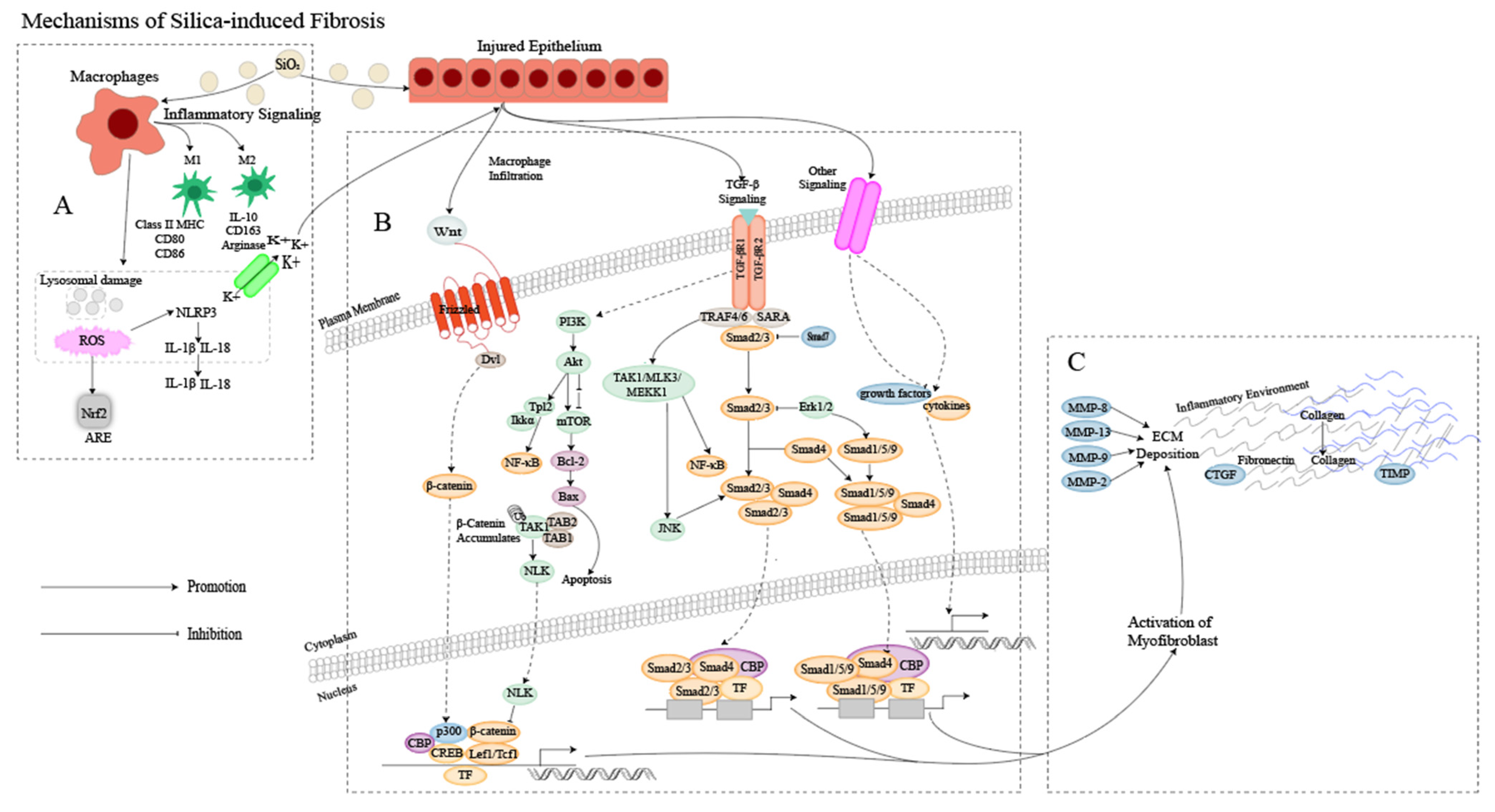
| Name | Structure | Source | Therapeutic Target | Experiment Model | Silicosis | IPF | Ref. |
|---|---|---|---|---|---|---|---|
| Dioscin |  | Dioscorea nipponica Makin | Reducing pro-inflammation and pro-fibrotic cytokine secretion and inhibiting TGF-β/Smad signaling and fibroblast activation. | In vivo:Silica- induced PF mice BLM-induced IPF miceIn vitro:RAW264.7 and NIH-3T3 cell | + | + | [48,124] |
| Dihydroquercetin | 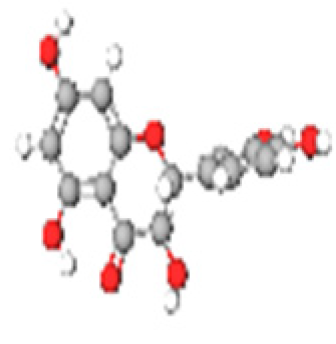 | Yew, larch and cedrus brevifolia bark | Inhibiting ferroptosis signaling pathway and modulating FOXO3-mediated NF-κB signaling to attenuate pulmonary fibrosis. | In vivo:Silica- induced PF miceIn vitro:human bronchial epithelial cells | + | − | [49] |
| Quercetin | 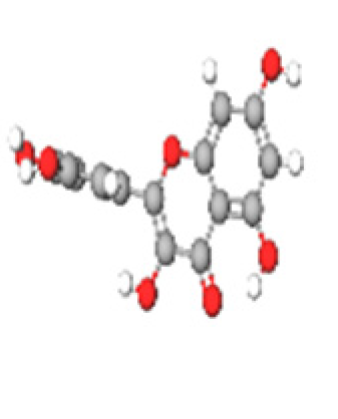 | Diverse plantsources | Decreasing expressions of the senescence-associated secretory phenotype, including proinflammatory factors, Il-6, TNF-α, TGF-β and MMP, and modulating the redox balance by inducing Nrf2. | In vivo:Silica- induced PF mice and ratsIn vitro:RAW264.7 macrophages with silicaEx vivo:blood of IPF patients | + | + | [50,125] |
| Oleanolic acid | 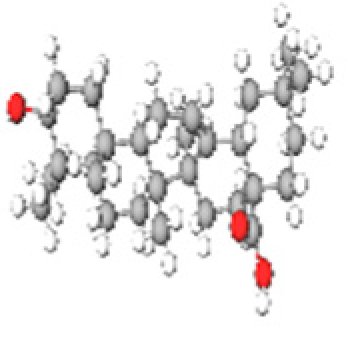 | Vegetables andfruits | Modulating the AKT/NF-κB pathway to decrease the expression of cytokines and collagen. | In vivo:Silica- induced PF rats | + | − | [51] |
| NAC | 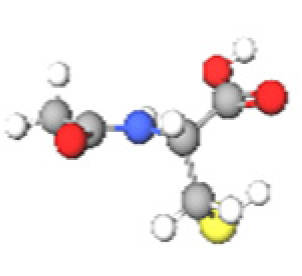 | Allium plants | Alleviating the inflammatory response through non-PI3K/AKT/mTOR signaling pathway. | In vivo:Silica- induced PF mice and ratsPatients with silicosis and IPF | + | + | [61] |
| Tan IIA |  | Salviamiltiorrhiza | Inhibiting the EMT and TGF-β1/Smad signaling pathway, reducing oxidative stress, activating the Keap1/Nrf2/ARE signaling pathway. | In vivo:Silica- induced PF ratsBLM-induced IPF mice and rats | + | + | [54,55,56,106] |
| Earthworm extract | 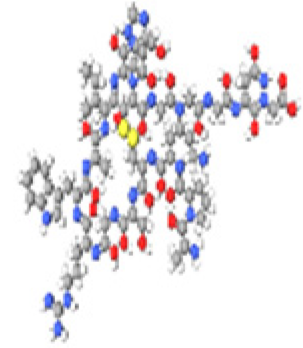 | Earthworm | Inhibiting oxidative stress, mitochondrial apoptotic pathway and EMT. | In vivo:Silica- induced PF mice | + | − | [57] |
| Emodin | 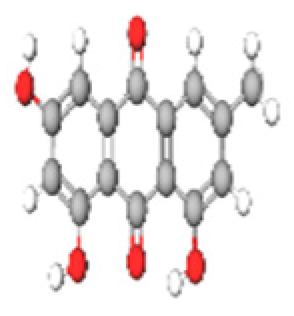 | Rhubarb | Inhibiting EMT, TGF-β1/Smad2/3 and NF-κB pathway to attenuate pulmonary fibrosis. | In vivo:Silica- induced PF miceBLM-induced IPF ratsIn vitro:human macrophages and AECs | + | + | [58,126] |
| Kaempferol | 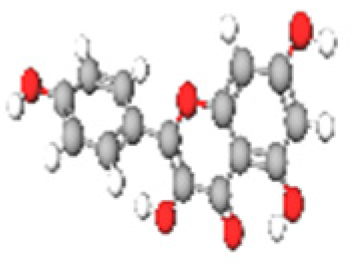 | plants and fruits | Restoring the lipidation of LC3 without affecting p62 expression, increasing autophagic flux, ameliorating silica-induced pulmonary fibrosis. | In vivo:Silica- induced PF mice | + | − | [73] |
| Tadalafil | 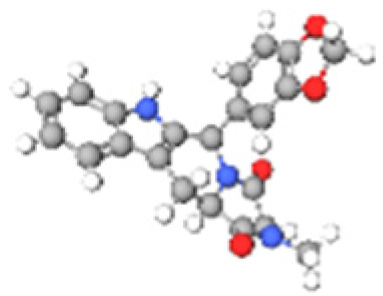 | Phosphodiesterase type V (PDE 5) inhibitors | Down-regulating inflammatory and fibrogenic cytokines expression, restorating oxidants/antioxidant hemostasis, antioxidant boost and promoting of angiogenesis | In vivo:Silica- induced PF rats | + | − | [76] |
| Sodium ferulate |  | Ferulic acid | Inhibiting lung injury and fibrosis through the neutrophil alkaline phosphatase 3(NALP3)/TGF-β1/α-SMA pathway. | In vivo:Silica- induced PF mice | + | − | [77] |
| Tamoxifen |  | Selective estrogen receptor modulator | Decreasing lung fibrosis score with blood TGF-β levels. | In vivo:Silica- induced PF rats | + | − | [78] |
| Atractylenolide III | 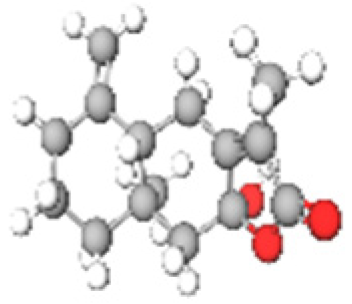 | Leucodon rhizome | Inhibiting autophagy by mTOR-dependent manner and improving the blockage of autophagic degradation in AMs. | AMs in human silicosis | + | − | [72] |
| Schisandrin B | 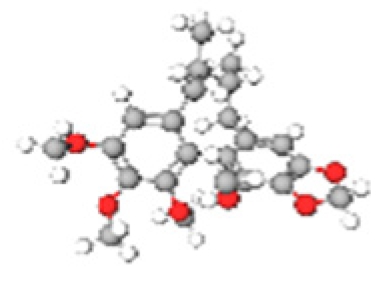 | Schisandrachinensis | Reducing the pulmonary fibrosis through inhibition of the mRNA express of TGF-β1 and Smad4 in the lung tissue, modulating the TGF-β1/Smad4 signal transduction pathway and inhibiting the target gene activation. | In vivo:Silica- induced PF rats | + | − | [88] |
| Dasatinib |  | Tyrosine kinase inhibitor | Inducing macrophage polarization toward the M2 phenotype and reducing lung inflammation and fibrosis | In vivo:Silica- induced PF mice | + | − | [90] |
| Metformin | 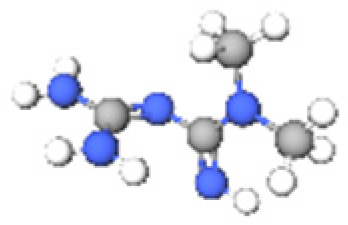 | French Lilac | Alleviating inflammatory response and collagen deposition in the process of pulmonary fibrosis via suppressing EndoMT through the AMPK/mTOR signaling pathway. | In vivo:Silica- induced PF mice and rats | + | − | [91] |
| Curcumin |  | Turmeric | Inhibiting the expression of cyclooxygenase (COX) 2, NF-κB p65, fibronectin and p-AMPK and IL-17A induced inflammation and pulmonary fibrosis through the AMPKα/COX-2 signaling pathway | In vivo:Silica- induced PF miceBLM-induced IPF mice | + | + | [95,127] |
| Hesperetin |  | Citrus fruits | Reducing oxidative damage and the inflammatory response to attenuate lung injury. | In vivo:Silica- induced PF rats | + | − | [62] |
| Oridonin |  | Rabdosia rubescens | Attenuating lung inflammation and fibrosis via covalent targeting inducible nitric oxide synthase (iNOS) and by regulating TGF-β/Smad pathway. | In vivo:silica-induced PF miceBLM-induced IPF mice | + | + | [108,128] |
| Astragalus polysaccharides |  | Astragalus | Inhibiting EMT, ROS, TGF-β1/Smads, apoptosis, inflammation pathways. | In vivo:BLM-induced IPF mice and rats | − | + | [59] |
| mangiferin | 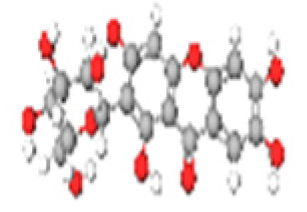 | Mango and papaya | Inhibiting toll-like receptor 4 (TLR4)/p65 and TGF-β1/smad 2/3 pathway and reducing NF-κB to attenuate pulmonary fibrosis. | In vivo:BLM-induced IPF mice | − | + | [129] |
| Parthenolide | 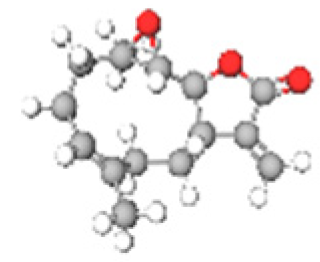 | Chrysanthemum parthenium L | Attenuating pulmonary fibrosis via the NF-κB/Snail signaling pathway | In vivo:BLM-induced IPF mice | − | + | [96] |
| Hesperidin | 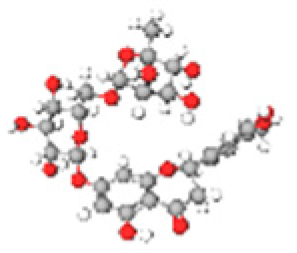 | Citrus fruits | Ameliorating pulmonary fibrosis via inhibition of TGF-β1/Smad3/AMPK and IκBα/NF-κB pathways. | In vivo:BLM-induced IPF rats | − | + | [97] |
| Dehydrocostus Lactone |  | Vladimiria souliei | Inhibiting pulmonary fibrosis and inflammation in mice via the c-Jun NH(2)-terminal kinases(JNK) and p38 MAPK-mediated NF-κB signaling pathways. | In vivo:BLM-induced IPF mice | − | + | [98] |
| Sulforaphane |  | Myrosinase enzyme | Enriching transcriptome of lung mitochondrial energy metabolism and providing pulmonary injury protection via Nrf2. | In vivo:BLM-induced IPF mice | − | + | [102] |
| Dihydroartemisinin | 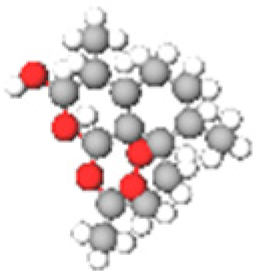 | Artemisinin | Suppressing NF-κB signaling in an Nrf2-dependent manner to alleviate oxidative stress. | In vivo:BLM-induced IPF rats | − | + | [103] |
| Melatonin | 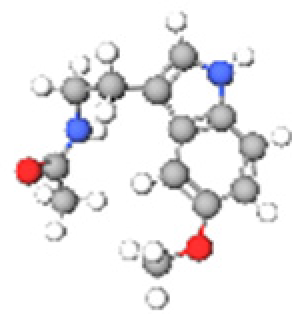 | Animals, plants, fungi and bacteria | Ameliorating pulmonary fibrosis via activating Nrf2 and inhibited galectin-3 expression. | In vivo:BLM-induced IPF miceIn vitro:human fetal lung fibroblast1 (HFL1) cells | − | + | [100] |
| Ginkgo biloba Extract (EGb761) | 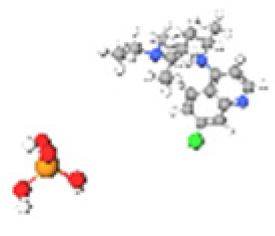 | Ginkgo Biloba | Attenuating pulmonary fibrosis by regulating the balance of M1/M2 macrophages and NF-κB-mediated cellular apoptosis. | In vivo:BLM-induced IPF mice and rats | − | + | [101] |
| Asiatic acid | 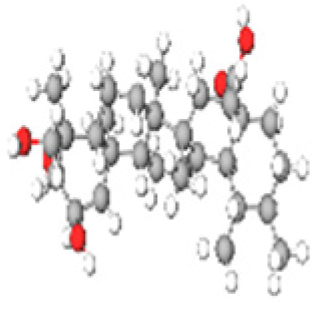 | Centella asiatica | Ameliorating pulmonary fibrosis via suppressing pro-fibrotic and inflammatory signaling pathways. | In vivo:BLM-induced IPF mice | − | + | [107] |
| Juglanin |  | Natural flavonoids | Alleviating lung injury by suppressing inflammation and fibrosis via targeting sting signaling. | In vivo:BLM-induced IPF mice | − | + | [109] |
| Tannic acid | 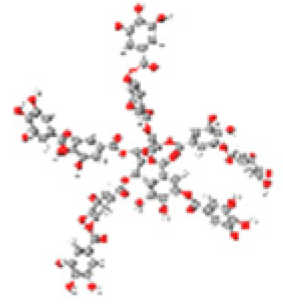 | Soft fruits, nuts and other plant tissues | Attenuating TGF-β1-induced EMT by effectively intervening TGF-β signaling. | In vivo:BLM-induced IPF mice | − | + | [111] |
| Nimbolide | 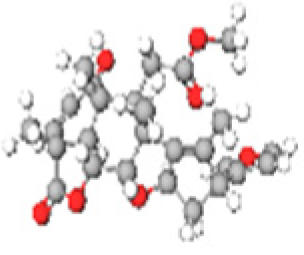 | Azadirachta indica L | Ameliorating pulmonary fibrosis through attenuation of TGF-β1 driven EMT. | In vivo:BLM-induced IPF mice | − | + | [112] |
| Olanpingensis polysaccharides |  | Entomogenous fungi | Alleviating pulmonary fibrosis progression through reducing the recruitment of macrophages to the lungs. | In vivo:BLM-induced IPF mice | − | + | [113] |
| Berberine | 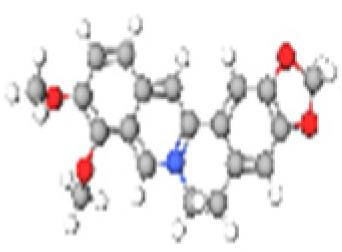 | Coptis | Inhibiting Smad and non-Smad signaling cascades and enhanced autophagy against pulmonary fibrosis. | In vivo:BLM-induced IPF rats | − | + | [123] |
Disclaimer/Publisher’s Note: The statements, opinions and data contained in all publications are solely those of the individual author(s) and contributor(s) and not of MDPI and/or the editor(s). MDPI and/or the editor(s) disclaim responsibility for any injury to people or property resulting from any ideas, methods, instructions or products referred to in the content. |
© 2023 by the authors. Licensee MDPI, Basel, Switzerland. This article is an open access article distributed under the terms and conditions of the Creative Commons Attribution (CC BY) license (https://creativecommons.org/licenses/by/4.0/).
Share and Cite
Li, R.; Kang, H.; Chen, S. From Basic Research to Clinical Practice: Considerations for Treatment Drugs for Silicosis. Int. J. Mol. Sci. 2023, 24, 8333. https://doi.org/10.3390/ijms24098333
Li R, Kang H, Chen S. From Basic Research to Clinical Practice: Considerations for Treatment Drugs for Silicosis. International Journal of Molecular Sciences. 2023; 24(9):8333. https://doi.org/10.3390/ijms24098333
Chicago/Turabian StyleLi, Rou, Huimin Kang, and Shi Chen. 2023. "From Basic Research to Clinical Practice: Considerations for Treatment Drugs for Silicosis" International Journal of Molecular Sciences 24, no. 9: 8333. https://doi.org/10.3390/ijms24098333
APA StyleLi, R., Kang, H., & Chen, S. (2023). From Basic Research to Clinical Practice: Considerations for Treatment Drugs for Silicosis. International Journal of Molecular Sciences, 24(9), 8333. https://doi.org/10.3390/ijms24098333






